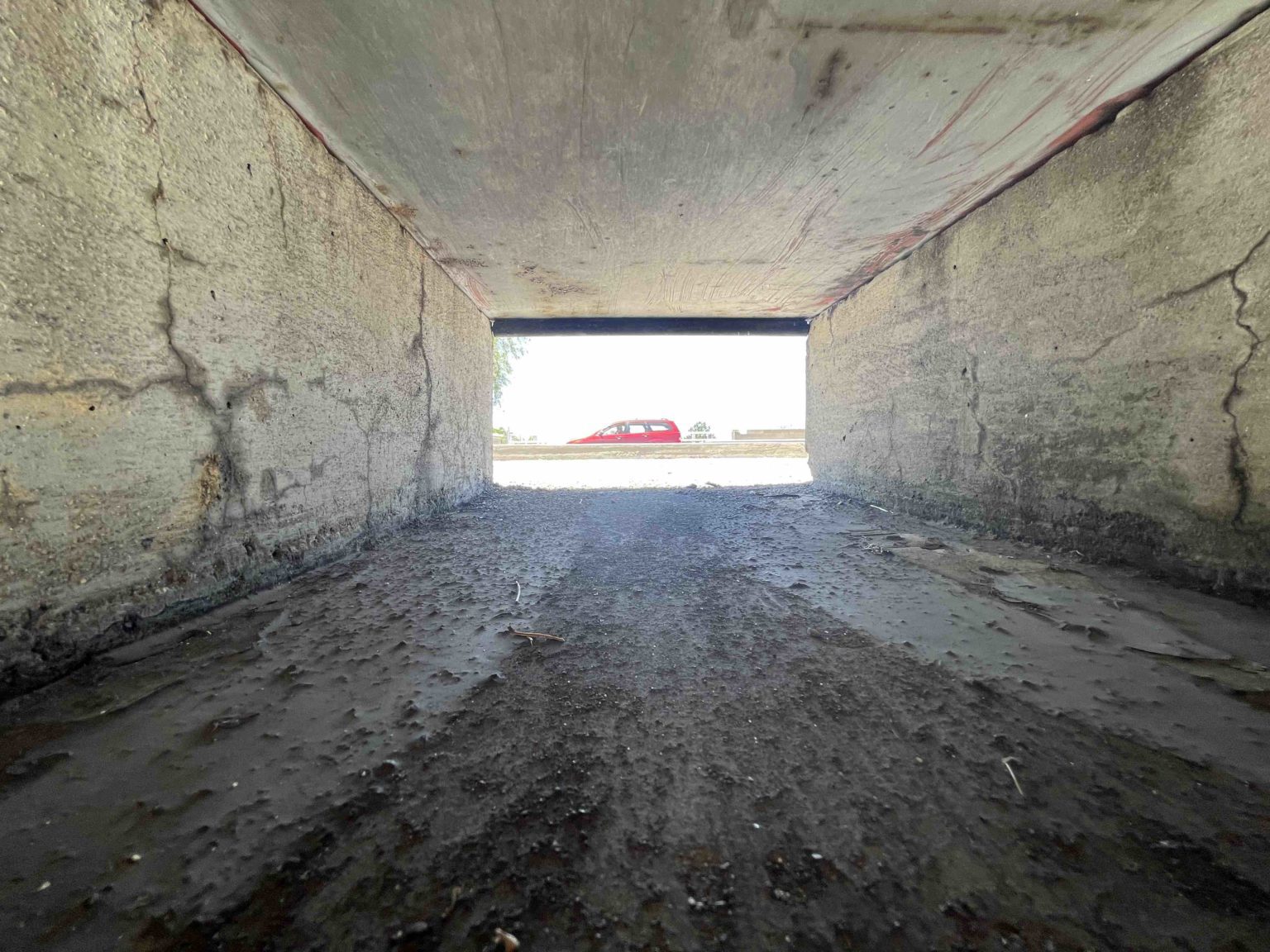Damage to South Domingo Baca Arroyo is keeping the city’s hands full. A major crack along the arroyo wall just east of Ventura Street, as well as fading signage and deterioration along other parts of the arroyo, has different agencies trying to figure out what to do about it.
The damage reported last month has both the Department of Municipal Development and the Albuquerque Metropolitan Arroyo Flood Authority looking into possible causes and solutions. Scott Cilke, spokesperson for the Department of Municipal Development, said there is no easy answer.
“Given the unusual size and damage done in this particular instance, it is not a simple fix,” Cilke wrote in an email. “It will take some time as we partner with AMAFCA to design and implement a solution that hopefully prevent any more of cracks this size in the future.”
When the damage was initially reported, Cilke said the cause was potentially from changing temperatures and extreme heat. He said high temperatures can cause cracking in concrete, which is evident in different areas of the city’s infrastructure, but the crack along the arroyo wall is quite extensive. According to Paul Jessen, secretary for the Heritage East Association of Residents, the floor of the arroyo is also damaged, possibly from the initial crack spreading.
“Update to damaged section of the South Domingo Baca Arroyo east of Ventura. Base of arroyo also damaged,” Jessen posted to NextDoor alongside a photo of exposed rebar and damaged concrete on Aug. 2. A comment below the post reads, “There is similar damage just west of Barstow.”
In other parts of the world, extreme heat is being blamed for major damage to transportation infrastructure. National Public Radio reported in late July that a heat wave scorching Europe has caused runways to buckle, roads to melt and rail tracks to bend out of shape in the U.K. On July 12, KSL Broadcasting reported on its website that the Utah Department of Transportation closed a major roadway after concrete buckled in the heat, and, on July 29, the Texas Department of Transportation Amarillo tweeted a photo of concrete damage on U.S. 87 caused by extreme temperatures.
Steve Muench, professor of civil and environmental engineering at the University of Washington, is cited by the Washington Post as saying high temperatures alongside improper maintenance can lead to expanding pavement on the roadways, causing “concrete pavement blowups or buckling.” Muench says some solutions include using smaller concrete slabs for roads, modifying asphalt mixture that make it more resistant to higher temperatures, and planting trees along areas where there are long stretches of pavement to keep temperatures down. RailTech.com reports that officials in Spain are testing to see if painting rail tracks white to reflect the sun will help to keep the metal from heating up and bending.
As for the damage along South Domingo Baca Arroyo, Cilke says finding a solution will take some time. “Because of the additional engineering that must be completed and the unusual nature of this particular case, it’s going to take longer than usual to complete this fix, and we don’t have a hard completion date at this time, but it is a focus.”


